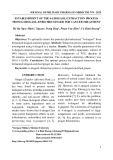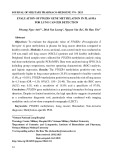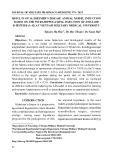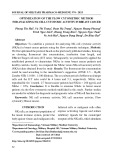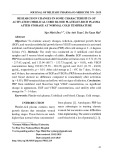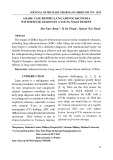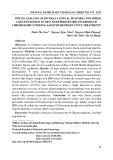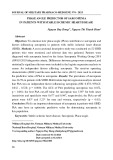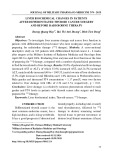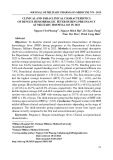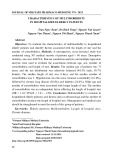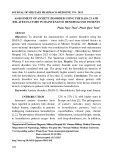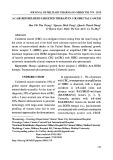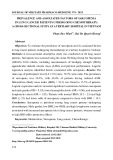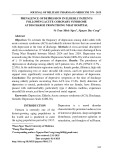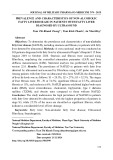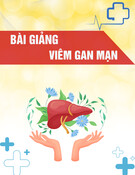
JOURNAL OF MILITARY PHARMACO-MEDICINE N04 - 2025
183
COMPARISON OF FUNCTIONAL OUTCOMES
BETWEEN ADJUSTABLE- AND FIXED-LOOP DEVICES
FOR FEMORAL FIXATION IN ARTHROSCOPIC ANTERIOR
CRUCIATE LIGAMENT RECONSTRUCTION
Vu Anh Dung1*, Pham Ngoc Thang1, Bach Minh Quang2
Nguyen Thanh Thao3, Vu Nhat Dinh1
Abstract
Objectives: To compare outcomes of anterior cruciate ligament reconstruction
(ACLR) with adjustable- and fixed-loop devices. Methods: A retrospective,
observational study was conducted on 92 patients who underwent ACLR with the
fixation of a hamstring graft with the fixed- and adjustable-loop suspensory
devices on the femoral side from December 2021 to December 2023. Knee
function was evaluated using the Lysholm score, Lachman test, and Pivot-shift
test, both preoperatively and at the one-year postoperative follow-up. Results: One
year postoperatively, the Lysholm score averaged 90.62 ± 4.167 in the adjustable-
loop group, with 83.1% of cases achieving good grades. In comparison, the fixed-
loop group had a mean score of 90.15 ± 4.704, with 77.8% of cases obtaining good
grades. However, no significant statistical difference was found between the two
groups (p > 0.05). A negative pivot shift test was confirmed in 60 cases (92.3%)
from the adjustable-loop group and 24 cases (88.9%) from the fixed-loop group
(p = 0.5). No cases of infection, graft failure, or flexion limitation were recorded.
Conclusion: There were no notable differences in graft laxity and functional
outcomes between the fixed- and adjustable-loop devices for femoral fixation in
arthroscopic ACLR.
Keywords: Anterior cruciate ligament; Adjustable-loop; Fixed-loop;
Suspensory fixation.
1Department of Joint Surgery, Military Hospital 103, Vietnam Military Medical University
2Vietnam-Cuba Friendship Hospital
3Military Hospital 354
*Corresponding author: Vu Anh Dung (surgeonvuanhdung@gmail.com)
Date received: 26/12/2024
Date accepted: 05/02/2025
http://doi.org/10.56535/jmpm.v50i4.1162





